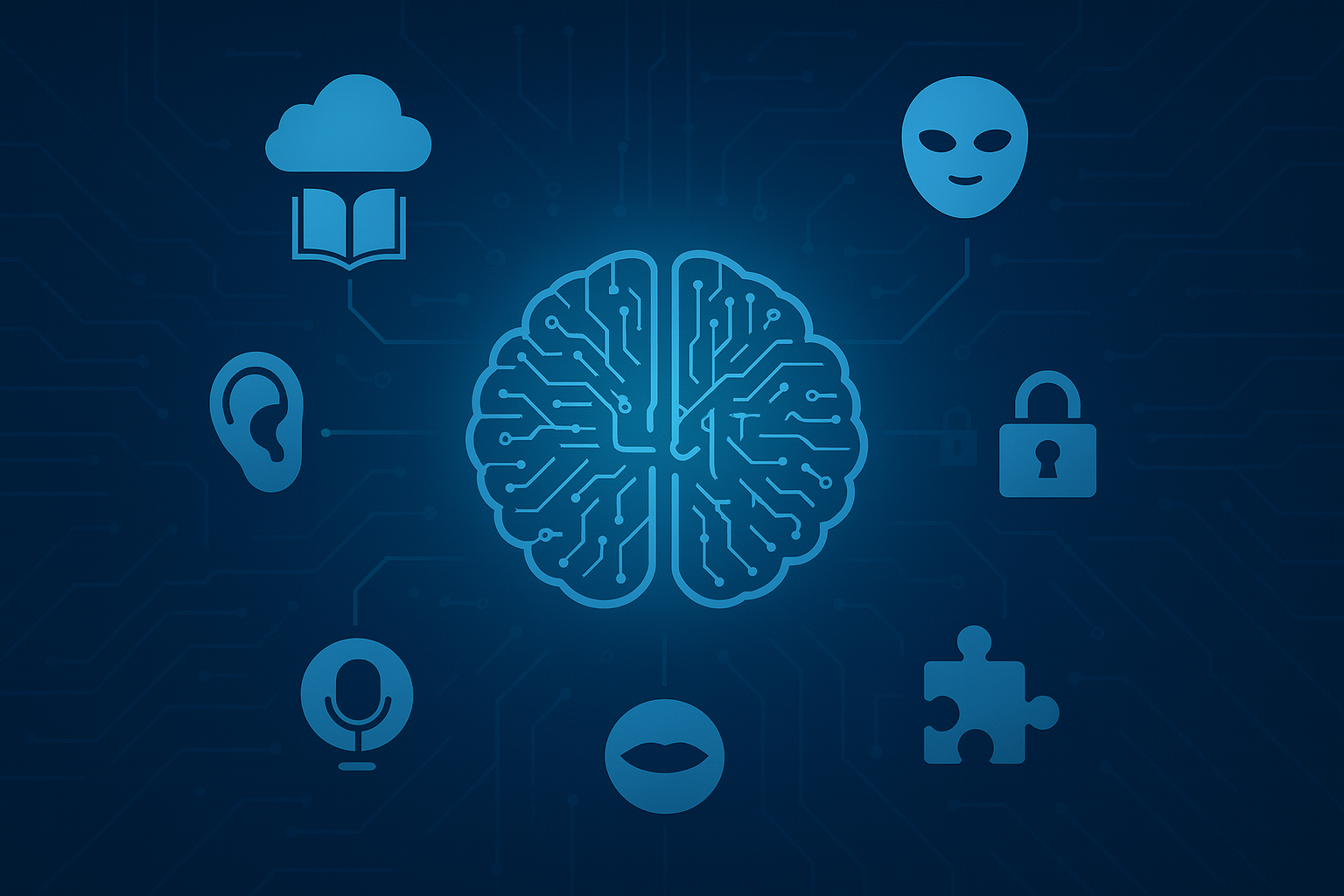Build Your Own J.A.R.V.I.S | 매거진에 참여하세요
Build Your Own J.A.R.V.I.S
#Javis #LLM #custom #optimize #secretary #tech #gap #structure #AI
What It Really Takes to Build Your Own J.A.R.V.I.S – And Why GPT Alone Won’t Cut It
"J.A.R.V.I.S, get ready."
That one iconic line from Tony Stark has fueled our dreams for over a decade.
A voice assistant that not only chats but acts—monitoring, planning, controlling, responding, and remembering.
And here we are in 2025, talking to Claude 3.5 or GPT-4o, thinking:

"Aren’t we basically there now?"
Spoiler: We're not.
Despite mind-blowing advancements in large language models (LLMs), we’re still far from having a real-world J.A.R.V.I.S.
Not because the models aren’t good enough. But because J.A.R.V.I.S. isn’t just a model—it’s an entire ecosystem.
Let’s break down why GPT isn’t your personal AI butler yet—and what it’ll actually take to get there.
LLMs Are the Brain—J.A.R.V.I.S Is the Whole Body
The fundamental truth is this:
An LLM is intelligence. J.A.R.V.I.S is a system.
GPT, Claude, or Mistral are incredible brains—capable of reasoning, summarizing, and chatting like humans.
But J.A.R.V.I.S? That’s a full-stack, multimodal, persistent, always-on agent built around that brain.
Here's what makes up a real J.A.R.V.I.S-like system:

Component | Role | Example Tech |
|---|---|---|
LLM (Brain) | Reasoning, summarizing, chatting | GPT, Claude, LLaMA, Mistral |
Memory | Persistent personal knowledge | LangGraph, vector DBs, embeddings |
Input (Senses) | Voice, image, sensors, GPS | Whisper, OpenCV, camera APIs |
Output (Actions) | Speaking, controlling devices, executing code | TTS, scripts, API calls |
Agent Layer | Decision-making and task orchestration | CrewAI, AutoGen, AgentOps |
Security Layer | Authentication and ethical control | OAuth, role-based access, privacy design |
The 7 Must-Have Capabilities of a True J.A.R.V.I.S.
1. Persistent Memory
A true assistant remembers everything: your name, preferences, past chats, birthday plans, and favorite coffee.
This isn't just vector storage. It requires contextual, time-aware, privacy-respecting memory architecture.
2. Multimodal Sensory Input
Text isn't enough. Your J.A.R.V.I.S should process voice, images, sounds, locations—even detect your emotional tone.
“Someone’s at the door” → Auto-camera detection → Real-time response.
3. Action-Oriented Outputs
A real assistant doesn’t just respond—it acts.
“Send the meeting notes to my team” → Instantly pushes to Slack.
4. Always-On Context Awareness
J.A.R.V.I.S doesn’t "turn off" after a chat.
It listens, waits, and acts only when relevant—like a true sidekick. Think: ambient intelligence.
5. Security and Permission Management
The more control the AI has, the more risk it poses.
Fine-grained access control, identity verification, and privacy-first design are mandatory.
6. Personality and Consistency
J.A.R.V.I.S isn’t just functional—it’s personable.
Tone, humor, quirks, even mood—an AI persona needs memory-based UX to feel real.
7. Agent Framework Orchestration
Connecting all these moving parts takes orchestration.
AgentOps, AutoGen, and LangGraph are examples of frameworks enabling dynamic, multi-step decision chains.
So Why Haven’t We Built It Yet?
Simple:
Too many complex things need to work perfectly—together.
Without memory, an LLM is a forgetful genius.
Without sensors, it’s deaf and blind.
Without personalization, it’s just automation—not assistance.
Creating J.A.R.V.I.S is not about one powerful model.
It’s about seamlessly integrating dozens of technologies into one cohesive, reactive, secure AI experience.
Reality Check: How Much Data Does a J.A.R.V.I.S-Level Assistant Need?
Let’s talk memory. A true AI assistant needs to remember millions of things, from past chats to documents, files, locations, tasks, and subtle emotions.
Estimating Daily Data Usage (Realistic Use Case):
Activity | Daily Example | Storage Size |
|---|---|---|
Voice Conversations | 4 hrs of voice interaction + TTS | 5–10MB (text), ~300MB (audio) |
Web Research | Summarizing 20–50 articles | 10–50MB |
Meeting Notes / PDF Parsing | 2 meetings + summary | 50–200MB |
Action Logs | App clicks, file edits, commands | 10–30MB |
Emails + Notes | 30 emails + 5 memos | 20–50MB |
Camera / Visual Input | Selective images or snapshots | 300MB–1GB+ |
Total daily: 100MB–3GB/day
Over weeks or months, that adds up fast.
Memory Volume | Scenario | Approx. Size |
|---|---|---|
10K vectors | Basic personalization | 100–300MB |
100K vectors | Personalized GPT + memory | 1–2GB |
1M vectors | Mini-J.A.R.V.I.S with past logs | 10–20GB |
10M+ vectors | Full J.A.R.V.I.S | 100GB–1TB |
The Real Challenge Isn’t Storing Memory—It’s Managing It
J.A.R.V.I.S-level memory isn’t just raw data. It needs to be compressed, summarized, and retrieved efficiently.
Smart Memory Architecture
- Hierarchical Memory
Recent context in fast-access RAM
Old conversations summarized and archived- Similarity + Time Filters
Search isn't just “find keyword”
→ It’s “find relevant info that’s recent and frequently mentioned.”- Memory Hygiene
De-duplicate, paraphrase, compress—automatically.
No one wants to store the same thing 10 times.
It’s Not Just Memory—It’s Intelligent Archiving
Storing memory like a hoarder isn’t smart.
J.A.R.V.I.S must curate, not just collect.
Three Smart Archiving Strategies:
- Time-Based Summarization
→ Daily/weekly memory → prioritized summary → delete or archive original.- Metadata-Only Storage
→ For PDFs, keep: summary + vector + tags—not full file.- Snapshot + Delta Tracking
→ Store only changes between morning/afternoon/evening states.
Final Thought: J.A.R.V.I.S Isn’t a Brain. It’s a Well-Organized Archive.
To build your personal J.A.R.V.I.S, you don’t just need a smarter LLM.
You need systems thinking—how to remember, prioritize, compress, and retrieve meaningfully.
Building memory is easy.
Managing memory—that’s what makes an AI assistant truly intelligent.
If you're working on AI agents, assistant apps, or even just dreaming of your personal J.A.R.V.I.S—start by thinking like an archivist, not just a model tuner.
Because in the end, J.A.R.V.I.S doesn’t just think.
It remembers. Reacts. And adapts.






